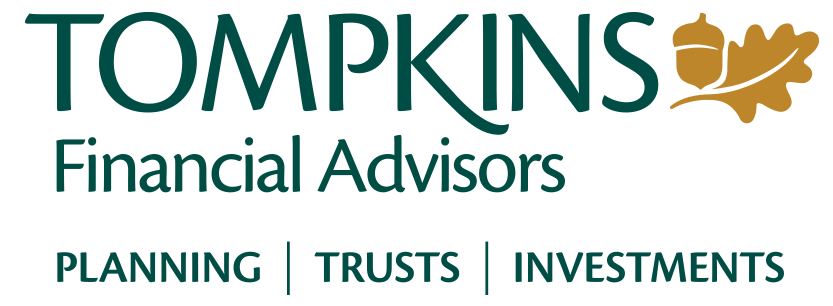

Quarter 2 Market Update
Red, White, and Blue Chips: The S&P 500’s Bipartisan Performance:
This year marks an extraordinary period for global democracy, with more than 50 countries throughout the world set to host national elections in 2024. In major economies such as the United States, India and numerous members of the European Union, changes in leadership can lead to shifts in geopolitical, fiscal and even monetary policy frameworks.
As we reach the halfway point in the year, we’ve already seen a variety of outcomes across the various elections that have occurred thus far. Incumbent parties in Taiwan, Mexico and India have managed to retain their leadership positions while early results from European parliamentary elections have continued to see more seats filled by nationalist candidates throughout the EU.
For US Voters and Investors, the most consequential election continues to build toward November’s Presidential & Federal Elections. Leading up to election day, it’s fairly common for political uncertainty to contribute to elevated levels of market volatility. While the anticipation and reaction to election results can cause fluctuations in stock markets, bond yields, and commodity prices, market volatility has historically subsided shortly after the polls close on election day.
Volatility Around Election Time*
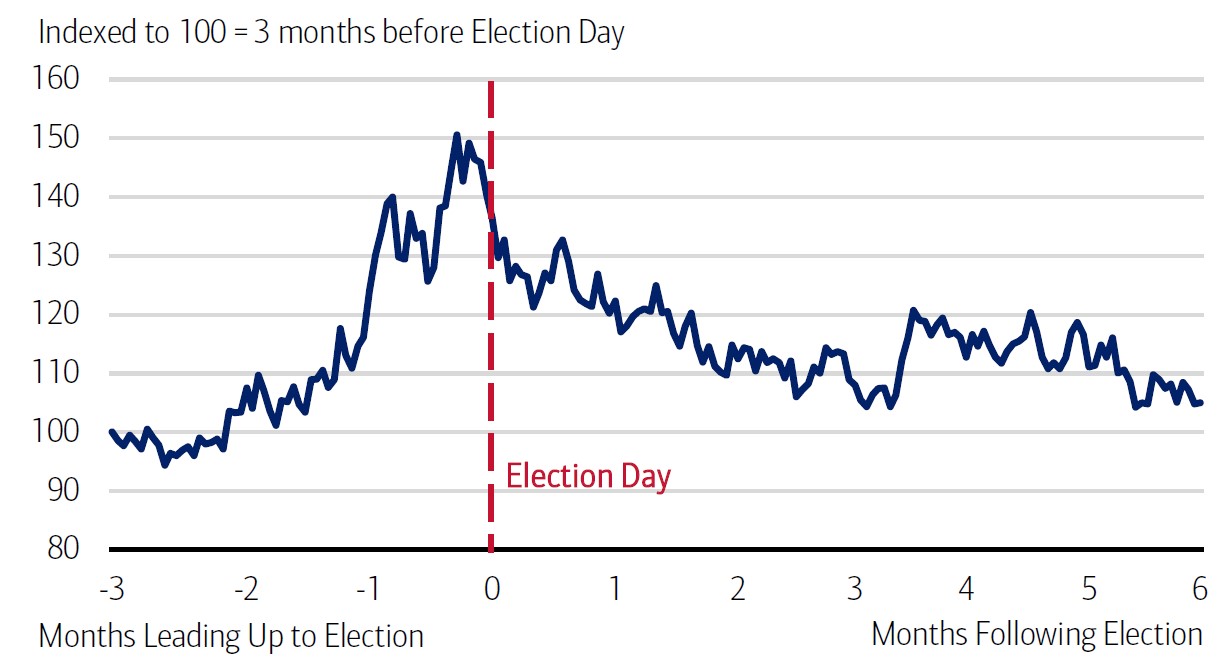
*As measured by the VIX Index. For US Elections 1990 through 2020. Sources: Bank of America, Bloomberg. Data through 2020 election
The S&P 500 has a history of delivering positive returns for investors irrespective of which political party is holding power in the White House and Congress. While there may be short-term fluctuations during elections or periods of changing policy backdrops, long-term trends suggest that businesses and investors tend to shrug off partisan control in an efficient manner. This is likely due to a combination of factors, including the influence of monetary policy, corporate earnings, and underlying economic fundamentals. So, regardless of who’s in office, the stock market has shown a remarkable ability to generate positive returns for investors over time.
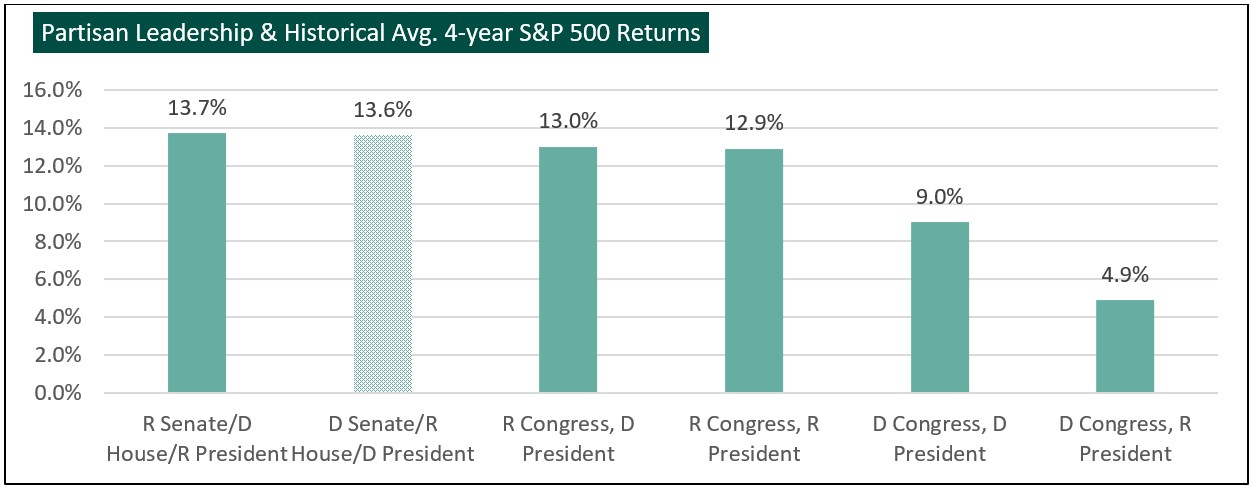
*Election and return data above refers to time period between 1933-2022, excluding ’01-’02. 2001-2002 are excluded due to Sen. Jeffords changing party mid-2001
Chart & data source: Strategas Research Partners
AI: A Promising Seed, but The Rose Has Yet to Bloom
Excitement around Artificial Intelligence (AI) continues to surge, with headlines touting its revolutionary potential. We find it instructive, however, to recognize that AI is still in its early stages of development. While advancements from companies such as Nvidia and ChatGPT are exciting, the era of AI tools being embedded in universally applicable enterprise and consumer software applications has yet to truly begin.
Much of the media’s current focus lies on foundational elements of this burgeoning industry. Advancements in
semiconductors and networking infrastructure are crucial for building the robust computing power and data transfer
capabilities that the AI applications of tomorrow will depend on. Just as fertile soil is necessary for a seed to flourish, these
advancements are essential for AI to reach its full potential.
Therefore, from an investment standpoint, it’s not surprising to see that markets have continued pouring capital into
AI Infrastructure and fueled the outperformance of semiconductor investments relative to the S&P 500 and its previous
“darling” industry, software, over the last 5 years (+98.1% and +94.4% respectively).
![]()
*Chart & data source: TFA Investment Research, Factset Research Systems
Instead, we tend to describe Semiconductor developers and network infrastructure providers as companies that are building highly essential groundwork well-positioned to benefit from increasing utilization as AI ecosystems begin to take root.
That said, we don’t believe this current infrastructure build-out diminishes the long-term potential of AI application
companies. As critical infrastructure continues to get established, AI-powered solutions in various sectors – from healthcare, to e-commerce, to finance – will begin to see user adoption and monetization improve. For these companies to truly blossom, a solid foundation must first be laid. By understanding the current stage of this modern development cycle,
investors can find similarities in how the leading application platforms of today were constructed long after the network
infrastructure buildout of the mid-90’s. It wasn’t until the late 2000’s when AOL’s Instant Messaging application began to
seed market share to today’s still dominant platforms like Google, Facebook and Twitter.
Economic Highlights: Steady Growth Amid Global Uncertainties
GDP - In the first quarter, we saw an increase of 1.3%, decelerating compared to the 4th quarter 2023. Estimates still expect
to see full-year GDP growth at 2.0%.
Inflation - Through May of this year, the 12-month run rate for CPI was 3.3%. This has been holding steady over the last few
months as the Fed looks for this number to trend back toward 2.0%.
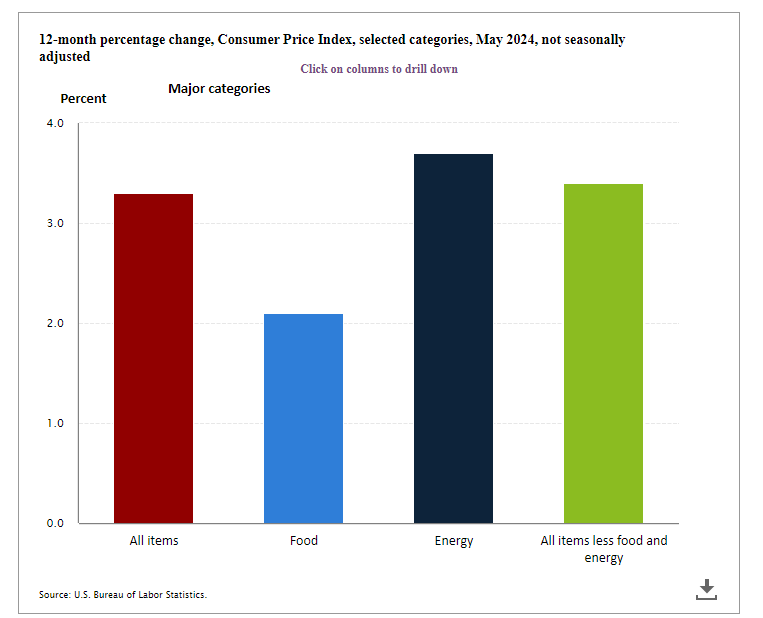
CPI - The May Consumer Price Index, released on June 12th, was unchanged overall for the month on an adjusted basis.
Gas and energy declined, while food and shelter had a slight increase. The stock market responded positively after the data
was released, with the Nasdaq closing 1.5% higher and the S&P 500 up 0.9%.
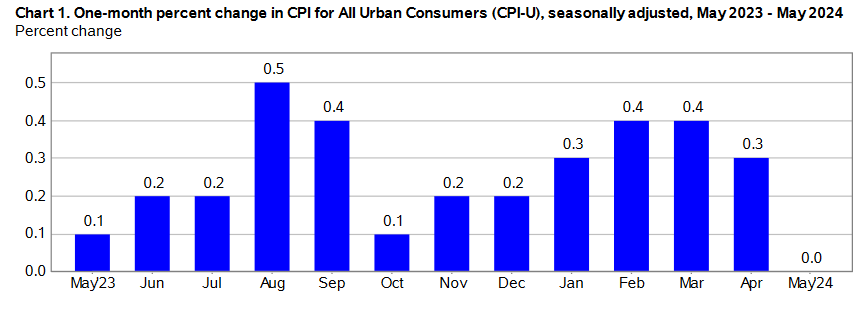
Source: Bureau of Labor Statistics June 12, 2024 News Release
PCE - The April 2024 Personal Consumption Expenditures Price Index increased 2.7% from the month of April one year ago.
PCE increased 0.3% for the month of April and the next round of data will be released June 28th.
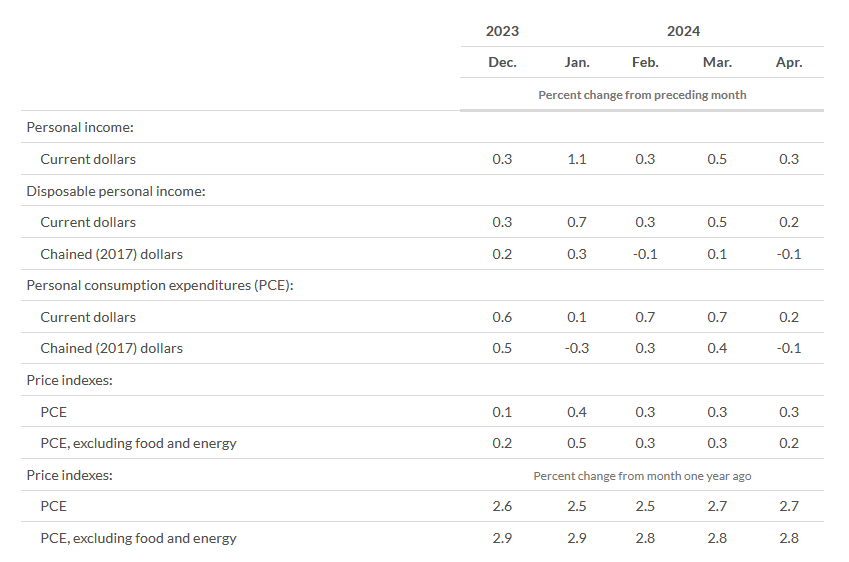
Source: Bureau of Economic Analysis May 31, 2024 News Release
Treasury Yield Curve
The yield curve has now been inverted for a record 22 months. While this has often been a recession indicator in the past,
the current economy has still show signs of strength.
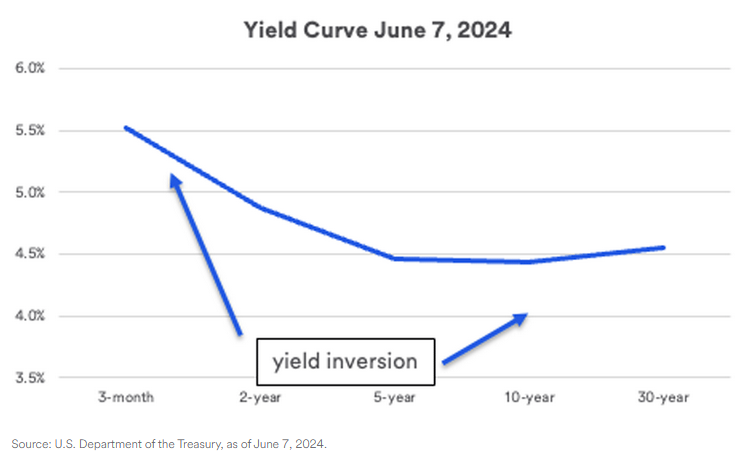
As the Fed gets closer to their 2% inflation mandate, a year-end rate cut is possible if they see more data suggesting inflation
is cooling. Until then, shorter-end Treasuries continue to yield more than longer-dated Treasuries, although not to the
degree we saw last year.
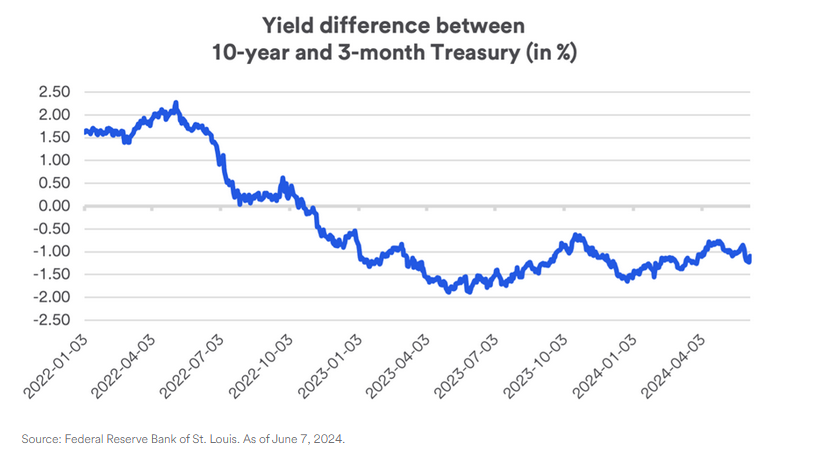
Higher for Longer. The Federal Reserve left interest rates unchanged at their last meeting, suggesting one rate cut is now
more likely, possibly after the election. Looking ahead, Fed officials are forecasting four quarter-point rate cuts in 2025,
potentially dropping the Fed funds rate down to 4 - 4.25%.
S&P 500 Performance YTD
The Magnificent Seven gained a lot of attention last year as these tech giants outpaced the S&P500 by close to 50% at yearend 2023. Through May of 2024, we see similar performance in today’s top 5 companies as seen in the chart below. These five companies are up a combined 27% YTD as of 5/31/24, compared to the remaining 495 companies of the S&P 500 which are up only 6% in the aggregate.
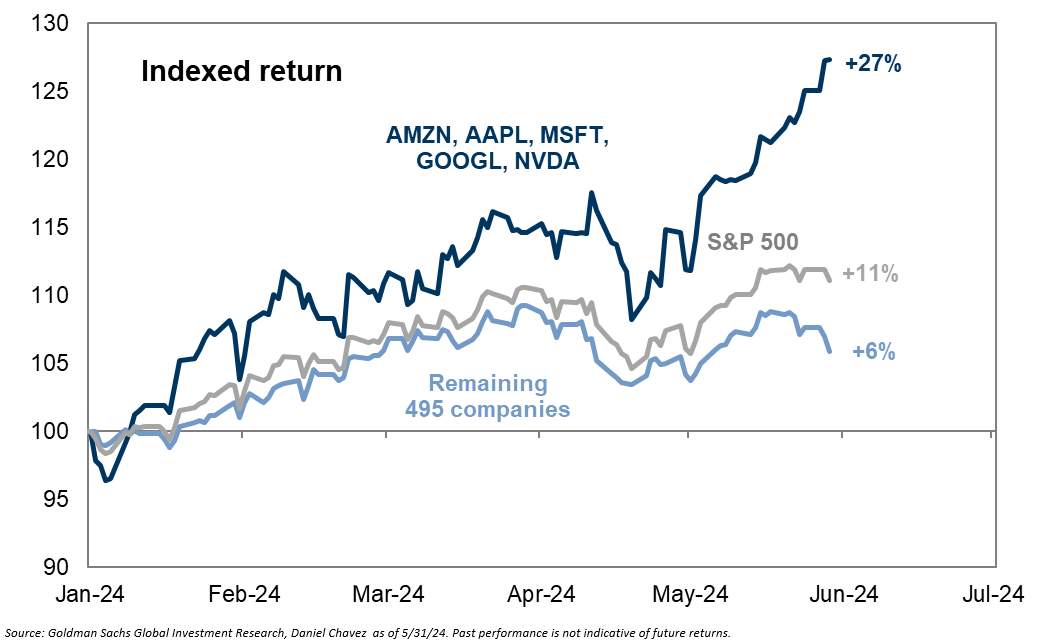
Furthermore, these five companies now make up 27% of the S&P 500 market cap, the highest level we have seen going
back to 1980 and up more than double since 2015. Market leaders don’t lead markets indefinitely (see the Nifty Fifty of the
70’s and the Internet Bubble of the 90’s) and a contrarian would suggest a market broadening is approaching. Valuations
ultimately do matter, and our globally diversified portfolio strategies would stand to benefit from an asset class reversion to
the mean.
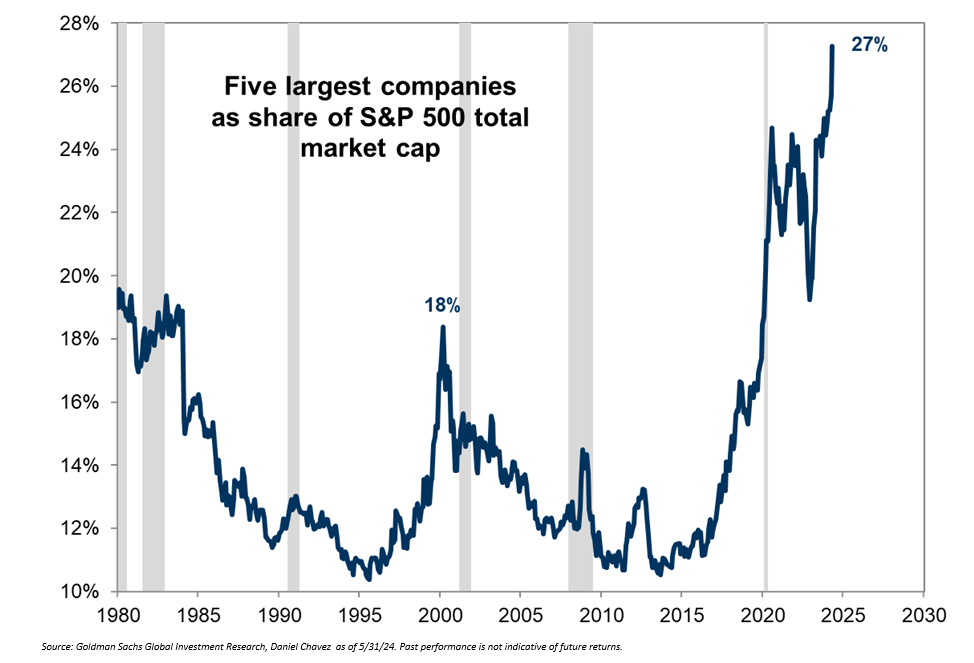
Solid consumer activity has probably been the biggest factor driving the economy to this point. A strong job market is
helping consumers play a key role in fueling this economic growth as low unemployment numbers and more job openings
than job applicants benefit the fiscal environment. So, we’re certainly not out of the woods by any means, and the next
couple quarters will be telling, but for right now, the IC remains cautiously optimistic.
Investments

